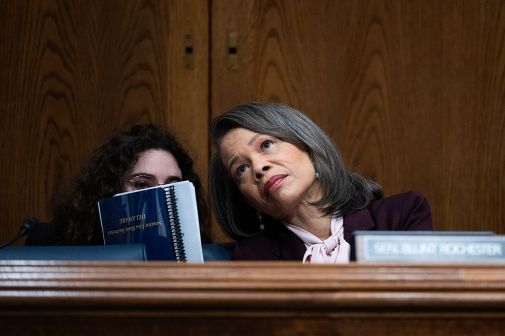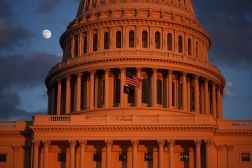NSF is piloting an AI chatbot to connect people with grants

The National Science Foundation is piloting a public-facing AI chatbot for grant opportunities, while simultaneously using that process to shape future implementations of the technology, the agency’s top AI official said.
The chatbot is aimed at making the process of looking for NSF grants easier, Dorothy Aronson, the agency’s chief AI officer told FedScoop. It will provide information about grants based on inputs from users about who they are and their research and can answer questions about the process, as it was trained using NSF’s proposal guide, Aronson said.
Aside from testing the chatbot itself, the process has also been a test of sorts for the agency, according to Aronson.
“The most important thing about this exercise that we’re running is that it’s not only to create the chatbot; I think that’s a nice side effect,” Aronson said. “From my perspective, it’s to experience what it’s like to do a rapid implementation … of an AI capability.”
Aronson said they’re hoping to engage the NSF community in a conversation about responsible AI, how they can do that well at the agency, and get people thinking about the future.
The pilot comes as agencies across the government are experimenting with AI. Already the government has disclosed at least 700 use cases, and chatbots appear to be a popular use of the technology, with agencies like the Department of State and Centers and Disease Control and Prevention recently noting they’re using such tools.
Although the chatbot is NSF’s first pilot of a commercial platform and first for a public-facing tool, it’s not the first AI use for the agency. NSF lists several use cases on its public inventory, and Aronson said the agency has developed smaller AI solutions before, such as a tool that suggests reviewers for people who work with NSF on research.
The first three months of the pilot are wrapping up, marking the end of the development phase, according to an NSF spokesperson. Now, the agency is “beginning to widely demonstrate the pilot, gather feedback, and further train and hone the model.” NSF is working with Spatial Front, Inc., a small business contractor, on the chatbot.
The chatbot will be particularly useful to people outside larger universities, which typically have offices dedicated to things like NSF grants, according to Aronson, who is also the chief data officer and has served as the CIO of the agency.
“This is most important to smaller universities or underrepresented communities who do not have access to large offices within their university that can help facilitate that work,” she said.
Creating the tool has also been different from the norm for IT solutions, which start with what the end result will look like, Aronson said. With AI, the component is educated to give the desired answers and the interface comes after. “It’s a completely different way of working,” she said.
Aronson said the agency has put the first skin — or appearance — on the chatbot and shopped it out to customers to get feedback. Now, NSF is thinking about two directions: how to improve the chatbot further and what the next AI pilot will be, she said.
Going forward, Aronson said the agency plans to do a few pilots to find additional capabilities of the technology. “In the next one, we know we want to do something more complicated, ultimately, and we’ve broken that more complicated longer-term objective into smaller bits,” Aronson said.
She also noted that while funding is tight this year, NSF is being “scrappy” about ways to move forward, and using the pilots to help figure out what to ask for in fiscal year 2026 so it has a “legitimate funding bucket for AI.”
Additionally, Aronson said she’s working with the Federal CIO and CIOs at other agencies to explore the idea of “a journey map of data and AI and IT initiatives that would allow all of the federal agencies better insight into what other people are doing.”
That journey map would allow agencies to get a picture of what others in the federal government are working on and learn about other solutions they could leverage, she said. An agency, for example, could use the map to see if another agency is developing a testbed for AI, identify extra compute power available elsewhere, or review an existing generative AI policy.
If agencies could see “where the expertise was across the federal government, we could leverage each other’s expertise instead of each of us evolving to have that level of knowledge on our own,” Aronson said.






